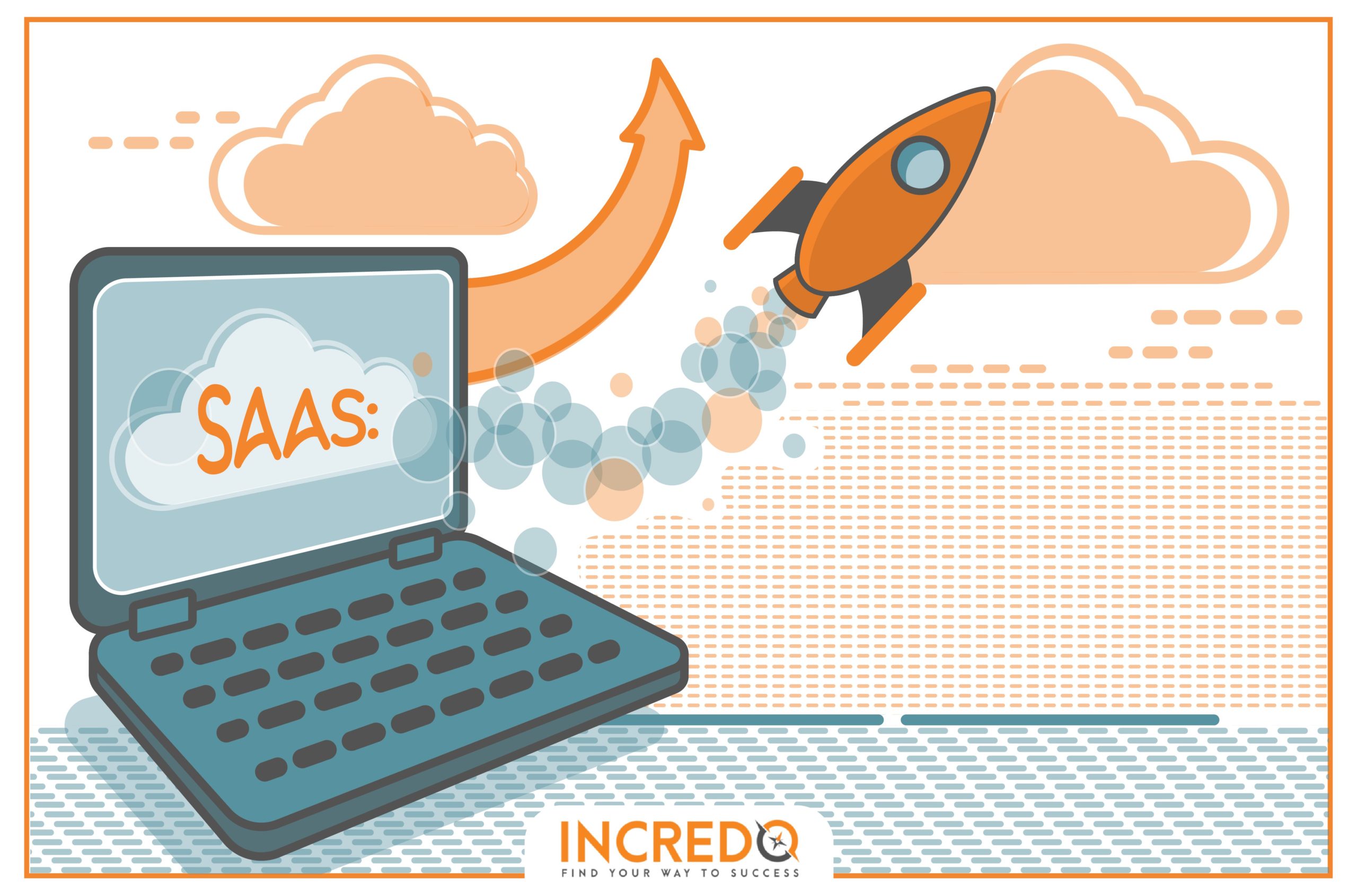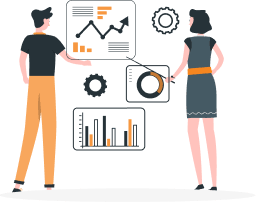“Marketing is enthusiasm transferred to the customer“.
Gregory Ciotti, Marketing Strategist
Hi there! Here we are again, another ultimate guide on inbound marketing and how to make your business truly amazing. Ever wonder why you love some websites, completely hate others or just do not understand some? Most people, even the smartest ones, fail the fundamental approach to marketing. Everything in inbound marketing is based on 2 basic pillars: buyer personas and buyer’s journey.
WordPress
The tricky part here is that everything seems pretty easy, understandable and reasonable, right? As we already know, buyer personas are semi fictional representations of your ideal customers. These are the people you want to target, bring to your website, educate them, build trust with and eventually make them your real buyers. Each piece of content, or even, each sentence that you create MUST provide value to the visitor and whatever you create, I mean WHATEVER, image, text, video, color, CTA, each HTML code has to be made for your buyer personas. ALWAYS think from their perspective, not your or anybody else’s. Okay, good. Let’s proceed.
Buyer’s journey is the imaginary “guidebook” of your website that leads the strangers through their journey up to the point of making a purchase. Imagine if you could give each visitor (ideally, your buyer persona) a handbook that tells him/her what page to visit first, which content to read first, how to continue, where to go next, how to find all the answers that are bothering him/her and eventually lead them to making a purchase, like when you lead a child in an unknown neighborhood.
Since it’s practically impossible to mail each persona a guidebook, this is exactly what you have to accomplish with the help of your website. This is the key part that most people miss out. The idea that your content must provide value to your buyer personas is reasonable and many people succeed in accomplishing it. But it’s just not enough. Your buyer personas have to clearly understand where they need to go. You have to guide them with your content through every stage of the buyer’s journey (awareness, consideration, decision: we will get to those in a minute) and deliver them right onto the checkout page. Trust me, this is the only way to do it correctly.
You can’t base your foundation on just one pillar, however strong it might be. As you progress, more and more weight will add up and eventually, it WILL crack. That’s why the foundation should be based on 2 pillars: they support each other, share the weight and provide incredible value to your business.
Think long term: It’s better to spend 6 months researching buyer personas and mapping out the buyer’s journey, than trying to close sales here and there. Most of those leads will never return, won’t tell anybody in their network, won’t engage on social media and create a buzz for you completely free, etc. The result is you will get very little return for all the effort, time, resources and motivation you put in for these prospects. If you aren’t willing to invest the time and effort into this, you better rethink.
The Buyer’s Journey
If you are still reading, then I succeeded in convincing you that buyer’s journey is important, which is great. Now, as we know the buyer’s journey consists of 3 stages: awareness, consideration and decision. Here is another part that everybody knows is important, but somehow fail to do: You have to provide equal amount of content for every stage of the buyer’s journey. By saying equal, I don’t mean that you need to have the exact amount of blog posts for each stage, or number of offers. It’s not about math, it’s about the equality of education and value you provide your visitors with.
The amount of content is really up to you. You can have 10 posts for awareness stage, 5 offers for consideration and only 1 for decision. The important part is that your content has to provide enough value for the visitors to proceed through each stage and move to the next one. For example, Marketo mentions in its “Definitive Guide to Engaging Content Marketing” that they follow the “411 rule” in their content marketing strategy. Their team publishes 4 educational/entertaining content for every one “soft promotion” and one “hard promotion”. The advice here is to make as much content as possible, but at the same time make sure that its relevant, not just jabbering. The more relevant content you have, the more buyer personas you will attract. People use different keywords to find a solution of their problem and most of the times, they all start from different sides.
For example, somebody might search for “how to lose weight fast?”, “best fat burners” and “workout plus diet plan to lose weight”. These are all different keywords, but all 3 people want the same thing: To get thinner.
I want to stress the point that you should have enough content for ALL 3 stages of the buyer’s journey. They are all equally important and can’t be skipped in any case that you might think of. Let’s see what happens if one of the stages gets skipped.
|
Awareness |
Consideration |
Decision |
Lack of Content |
|
– |
+ |
+ |
You have everything to prove your worth to the buyer, but you need to connect with the buyer first. If the buyers cant find you, doesn’t matter what product/service you offer, even if it’s the best in the world, it becomes useless. |
|
+ |
– |
+ |
The buyer was introduced to his/her problem and educated with the help of your content. But they are not ready to make the purchase yet and won’t by no means jump to decision stage right away. If you can’t provide more information, they will just use the knowledge they got from you and turn to somebody to evaluate benefits and features. |
|
+ |
+ |
– |
You have successfully educated your buyer. You have proven your worthiness and they are technically ready to buy, but with no decision content you will just aid your competitors. You will create a perfect buyer, but fail to close the deal. Your competitors will do it instead. |
Now, this is important. Some people might tell you that different buyers may find you when they are in different stages of the buyer’s journey. This means that a person may connect with your company already in consideration or decision stage. This is true. However, it does in no way establish that you can skip any stage. If buyers find you when they are already in the 2nd or 3rd stage, it’s all good, but to get maximum value from Inbound you need to utilize it to its full potential.
Let’s move on and see how we need to construct our content for each stage of the buyer’s journey.
Awareness Stage
During the awareness stage, the potential prospects just start to realize they have a problem with something and need to find a solution. Your job during this stage is to create content that will address their pain points. Anything else at this point is irrelevant, since the potential buyers don’t really care about your product/service specifications, price, support, etc. All they care about is finding some material that will tell them more about their pains and educate them. For this stage the best content comes in forms of e-books and blogs/articles.
Let’s try to picture this scene. A person becomes aware of the problem at hand, goes to Google and types in something related to his problem. Let’s name the person Alice. What Alice expects to get is information: relevant, easy, educative information. A blog might be her best option at first, since it’s generally shorter than an e-book and is a great introduction. If the blog provides value and is focused on her pain points, (this is where we go back to our buyer personas and remember that every sentence should be addressing their pain points) Alice is happy and ready to take another step.
After reading the article, usually at the bottom or on the side, she sees a clear CTA, telling her about a free e-book concerning her pain points. Alice then goes to the landing page, submits the form on the page and gets the free offer. The e-book should, of course, be written with the same priorities in mind: speak buyer persona language and touch pain points. Alice now understands what your company does and marks you in her list of possible choices.
Consideration Stage
Now that Alice has made some research regarding her pain points and needs, she has some idea of what she needs and knows that your company might be a good choice for her. She has reached the consideration stage: figure out how can her problem be solved and who will help her best. This is the stage where you have to provide content that will prove your worthiness to Alice. Case studies, customer reviews and videos showing your product in action are a good way to accomplish this task.
The content of this stage has to focus on the actual product/service that your company provides, but show the features and how it can be of use, not the price and where to buy it. In other words, show her that your product/service is the best way possible to solve her issues. Remember that Alice is still considering and needs a small push to get ready to buy.
Consideration stage content rests within the features pages, reviews of past users and case studies showing success of clients using your product/service. The more education and detail you provide, the better Alice will feel about the product and become convinced that it is exactly what she needs.
Decision Stage
We have arrived at the last stage of our journey. Alice is ready to buy and is considering the last steps: price, customer support, time, etc. This is the stage where you will need to talk about your company most. Free trials, live demos, consultations, calls and face-to-face meetings are all excellent here. You now have a qualified buyer who is technically ready and willing to make the purchase. She just needs an answer to one final question: why choose your company over others? Provide the answer to this question and you will earn yourself a good client.
During a call or a face-to-face meeting you should always be helpful. The purpose for the meeting/call is to make Alice comfortable with your company and show her that you are the one she is looking for. It’s a good idea to back up your meeting with emails and/or voicemails. This will show that you are a responsible, caring company and really want Alice to become your client.
To help you meeting proceed efficiently, I recommend you to implement the B.A.N.T. model for your call. BANT is an easy way to establish a connection with your buyer and lead the conversation in a favorable way.
B for Budget
You want to start your conversation with the budget. See how much your buyer can/is willing to spend for the solution you provide. You have to agree on this first and proceed later. If your buyer can’t afford your product, it doesn’t matter how good it is, since there will be no purchase. Do everything you need to do and get this matter settled.
A for Authority
Next you need to understand if the final decision making process rests with the person you speak to or not. If Alice isn’t the final decision maker (for any reason, she might be too young, she might be doing the research for her boss or friend, etc.), you will need to find a way to communicate with the real buyer. Whatever you tell Alice might not hit home, since she will just pass the information to the other person, but sales people will know that how you put the words together, can make all the difference in the world.
N for Need
Next on your list should be to find out whether your potential buyer really needs your services and why. If Alice really needs you, she will be open for communication and eager to tell you about what made her think she needed a solution, how the problem arose, etc. This information can help your sales team think about offers on the go and discuss them. The more information you have, the more irresistible offers you can make.
T for Timeline
You want to know what the deadlines are. How fast does Alice need your product/service? How much can she wait? Is she willing to start right away? In other words you need to find out the sense of urgency. This can help you with 2 things: First, if Alice needs the product right away, you can close the deal right there. For example, Alice might need shoes for a wedding ceremony that is due tomorrow and considering that she has the budget, she will be a much better buyer for you than if she just wanted new shoes.
Second, it will help you understand how qualified your buyer is. If you are a wedding service providing company and you find out that Alice is going to have a wedding ceremony tomorrow, means that you have a chance to offer more services relevant to Alice’s pain points.
Having all this information can help you prioritize clients in case you are overloaded. For example if Alice needs the product/service within 2 weeks and another person needs it tomorrow, you can deliver to the second person first, then turn to Alice.
A very small, but very useful marketing trick here is to deliver before the deadline. If you agreed on 2 weeks of time, deliver the product/service in 10 days. This is a minor thing, but will create a very positive impression on your buyer and increase the chances that Alice will buy from you again or recommend you to her personal networks.
Determine the Cost of Inaction
You will have much more room to work with, if you can estimate the cost of inaction for Alice. To put it simple, what’s worse for her? Buying the product at slightly uncomfortable terms, or refusing to buy the product. If the cost of inaction is greater than cost of buying, you can negotiate the price in a more favorable way and still be able to close the deal, while getting a happy customer in the end. It’s like a triple win!
What Happens Next?
To make your decision stage strategy complete, you need to have a clear idea of what will happen after your meeting. After gathering the information via the BANT method, make a plan based on your data. For example, if Alice has the budget and a high sense of urgency, consider upselling and nurturing. If Alice isn’t the authority, plan how to organize a meeting with the real buyer. Finally, a simple follow up email thanking your buyer and informing about the upcoming delivery operations should be in your arsenal.
Conclusion
Buyer personas and buyer’s journey go hand in hand. One cannot exist without the other and they are equally important. If you are considering to implement inbound, then be ready to invest time and resources in proper research, strategy, planning and execution. Do this once properly and the magic of inbound methodology will continuously drive your sales up, 24/7. Do this bad or partially, and you will face constant flow of problems, issues and negative emotions. I recommend to stick with option number 1. What do you think?
Tags:
SaaS Metrics
August 4, 2015






Comments